



Policy Rate Updates: Double cut finale
 DOWNLOAD
DOWNLOAD

Monthly Economic Update: One for the road
 DOWNLOAD
DOWNLOAD

Inflation Update: Still low, still slow
 DOWNLOAD
DOWNLOAD


Rate hike impact ‘manageable’ but not yet fully felt — DoF

THE IMPACT of interest rate hikes on the economy remains “manageable” but will be felt for the rest of the year, officials from the Department of Finance (DoF) said.
Finance Secretary Benjamin E. Diokno said the impact of the Bangko Sentral ng Pilipinas’ (BSP) monetary tightening has yet to be “fully felt.”
“There’s a lagged effect. But we don’t know what will happen next, if they will maintain the rate at 6.25%. It’s not fully felt yet. There is a nine-month lag. We just started adjusting the rate 10 months ago,” Mr. Diokno said at a briefing on Friday.
The Finance chief said the full weight of rate hikes could be felt in the second, third, and even in the fourth quarter.
“There are long-term and short-term effects. For example, the impact on investment, higher interest rates mean lower investment. If you’re an investor, you look at the long-term rate…there are those factors,” he added.
“We recognize there could be a hit on economic activity, but this is manageable, primarily because, for example, as monetary policy has adjusted upward, the adjustment of fiscal policy is very gradual,” DoF Undersecretary Zeno Ronald R. Abenoja said at briefing on Friday.
The BSP has raised rates by 425 basis points (bps) since May 2022 to combat elevated inflation, with the policy rate now at 6.25%.
Headline inflation slowed to an eight-month low of 6.6% in April from 7.6% in March.
However, this was faster than the 4.9% in April 2022 and marked the 13th straight month that headline inflation breached the BSP’s 2-4% target.
This brought the inflation average for the first four months to 7.9%, above the BSP’s 6% forecast for the year.
Mr. Abenoja said inflation expectations and monetary tightening are taken into account by the government when setting growth targets.
“The target of 6-7% growth takes into account the impact of all these previous monetary policy adjustments,” he said.
He added that there “continues to be domestic support for the economy,” citing infrastructure spending, improved employment numbers, and manufacturing output.
The Philippine economy grew by 6.4% in the first quarter, the slowest pace in two years.
The latest gross domestic product growth print was slower than the revised 7.1% in the previous quarter and the 8% expansion in the first quarter of 2022.
Meanwhile, Rizal Commercial Banking Corp. Chief Economist Michael L. Ricafort said easing inflation will help drive growth moving forward.
“The expected easing trend in year-on-year inflation for the coming months could fundamentally support faster economic growth going forward amid reduced drag from inflationary pressures,” Mr. Ricafort said in a Viber message.
“Possible cuts in US Federal Reserve and local policy rates for the coming months of 2023 and in 2024 would also help reduce borrowing costs and, in turn, support faster growth,” he added. — L.M.J.C. Jocson
This article originally appeared on bworldonline.com





 By BusinessWorld
By BusinessWorld